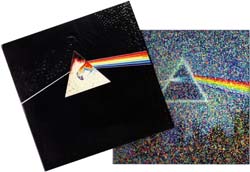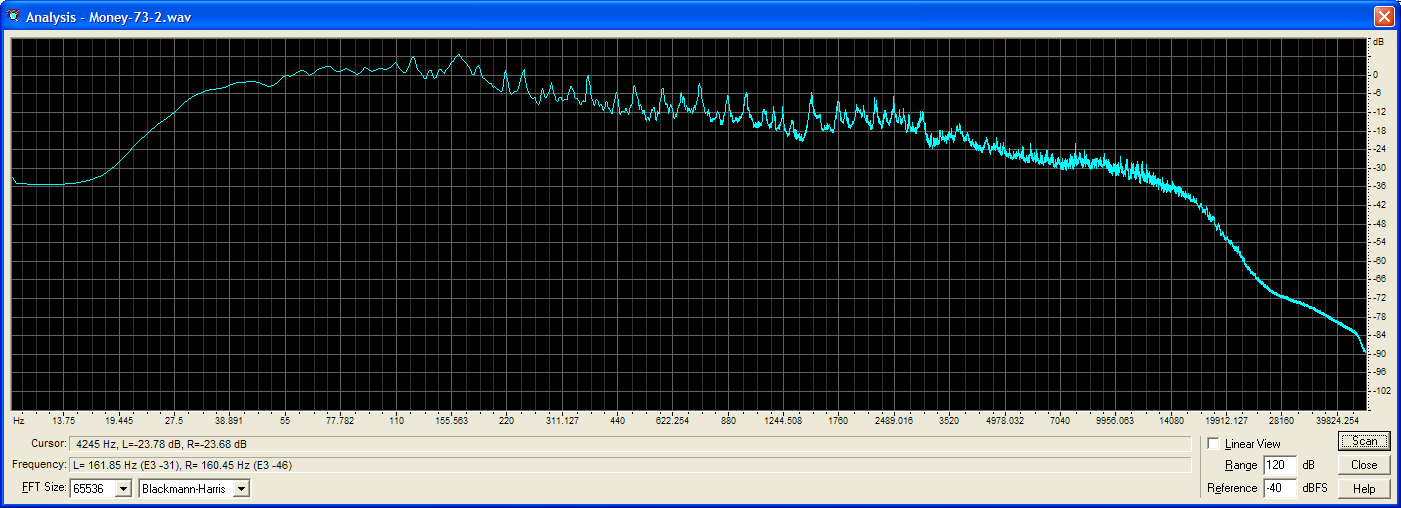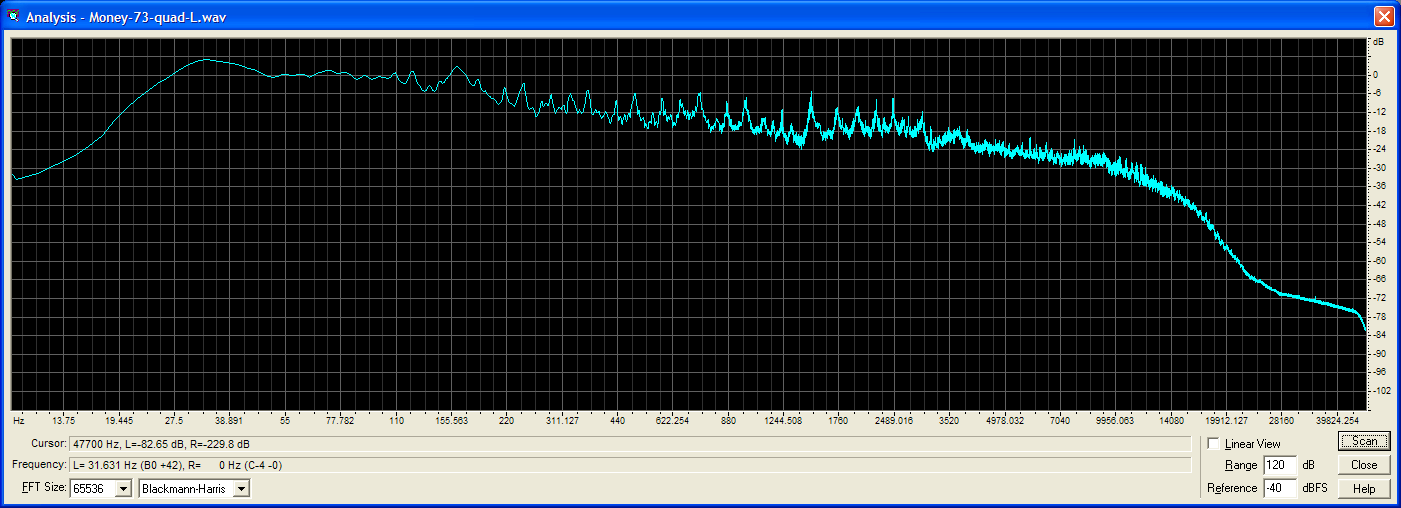 Picture: N/a Sound:
Picture: N/a Sound:  Extras:
Extras: 

Download scan of review (JPEG, right click, Save As)
Music:  Picture: N/a Sound:
Picture: N/a Sound:  Extras:
Extras: 
Also in the box are six discs: three CDs, two DVDs and this Blu-ray disc.
There's no good reason that I can think of why the Blu-ray should not be released as a standalone at a reasonable price. That's why I live in hope.
While I shall mostly discuss the Blu-ray here, it's worth noting that one of the CDs is yet another remaster of the album, performed in 2011, and one of the DVDs is multiple versions of the original recording.
The relevant versions are:
Of greater interest is the Blu-ray. It also comes with these three mixes, but being Blu-ray it doesn't need to resort to lossy compression for the multichannel versions. Indeed, it doesn't resort to compression at all. All three are provided with 24 bits of resolution, 96kHz sampling and LPCM as the format.
That's a lot of data. All three are selectable audio tracks from one video title. Since together they add up to over 27Mbps, there isn't much room for the video part. But since that, in turn, is merely a full black screen throughout, it only uses 2Mbps.
Now, there is little point in me talking about the musical content. Many far better informed than me have produced a voluminous literature on the subject. Suffice to say, in case there are any youngsters new to this who happen to be reading, that The Dark Side of the Moon was one of the truly genre-shifting albums in the history of recording.
So little needs to be said about the stereo mix, other than to note that the frequency spectrum of the sound (I extracted the audio from all of these tracks for analysis) features a smooth, natural decline from the bass up to about 15kHz, at which point there is a gradually increasing decline, which continues smoothly up to perhaps 25kHz. At that point the power level flattens out a little, suggesting that the signal has descended below the level of noise on the master tapes.
The 5.1 channel mix is that prepared for SACD in the early 2000's. This was converted to PCM from the Direct Stream Digital in which it was mastered, and consequently has a rising level of ultrasonic noise, which overtakes the signal at around 30kHz.
Elements of this mix were apparently criticised by Alan Parsons, whereas others were applauded by him. As he noted, much of it is stereo with ambience.
And then there's the Quad mix. That is a mix that today would be specified as 2/2.0. This is Alan Parson's version, but the poor chap was limited in his day by delivery format. It was released in 'SQ' Quadraphonic on vinyl, and Q8 magnetic tape cartridges, but both of these had limitations. SQ Quad had a front/rear separation of about 3dB, which limited the surround field effectiveness enormously. Q8 cartridges had four discrete channels for decent separation, but were, well, cartridges. That meant the reliability problems of an infinite loop tape, and the fidelity limitations of slow magnetic tape (probably 10kHz effective top end).
Well here, nearly forty years later, you get Quad as it would have been heard by Alan Parsons from his mixing console, with effectively perfect channel separation for all four channels, and high fidelity performance. Higher, perhaps, than Parsons experienced, because this one has a frequency spectrum similar to the stereo mix.
This was not a mix intended to be faithful to a stereo 'original', but an independent work of its own. Okay, in parts the mix is a bit flashy, but it seems surprisingly fresh even after all these decades, especially to one that has never before experienced Pink Floyd in Quadraphonic.
 (Australian rating); Region Free
(Australian rating); Region Free
The following frequency spectrum graphs were generated by CoolEdit 2000, run on the front left channel extracted digitally from the various mixes held on the Blu-ray. If necessary, scroll to the right to see the end of the graphFirst there was original 1973 stereo mix:

This one is from the 1974 quad mix:

This one is from the 2003 5.1 mix:
